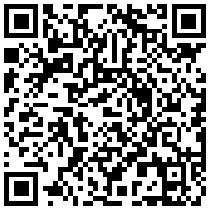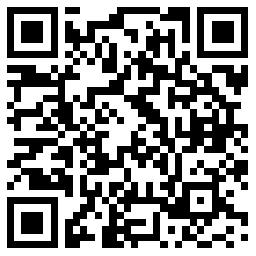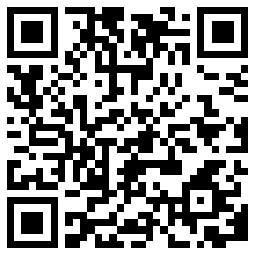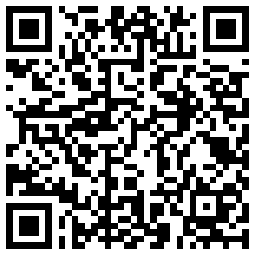Monitoring and Managing the Adherence to Antiretroviral Therapy in Patients with Human Immunodeficiency Virus Infection
-
摘要: 高效抗反转录病毒治疗大大降低了人类免疫缺陷病毒(human immunodeficiency virus, HIV)感染者的病死率, 使HIV感染者可获得长期存活。服药依从性是实现病毒抑制、延缓疾病进展的关键因素之一。目前依从性的测量方法可分为间接和直接测量两种。影响依从性的因素大致可分为个体水平因素、药物治疗方案因素、人际关系问题和结构性问题4大类。可提高依从性的方法有:短消息提醒、指导治疗及制定计划、实时依从性监测和应用长效抗病毒药物制剂等。虽然已有较多相关依从性的研究, 获得可推广的行之有效的依从性监测及提高手段仍存在较大挑战。Abstract: Highly effective antiretroviral therapy (ART) can greatly reduce the fatality rate in patients with human immunodeficiency virus infection and enable them to achieve long-term survival. Medication adherence is one of the key factors to achieve viral suppression and delay disease progression. Current methods of measuring adherence can be divided into indirect and direct methods. The factors affecting adherence can be roughly divided into four categories:individual levels, drug treatment programs, interpersonal relationship problems, and structural problems. Strategies to improve adherence include short message alert, treatment guidance and planning, real-time adherence monitoring, and application of long-acting antiviral agents. Although there have been many studies on adherence, there are still major challenges in obtaining effective and scalable adherence monitoring and improvement tools.
-
Keywords:
- human immunodeficiency virus /
- antiretroviral therapy /
- adherence
-
子痫前期是一种表现为高血压、蛋白尿及各脏器功能受损的妊娠并发症,严重影响母婴健康,是孕产妇和围产儿死亡的主要原因[1]。临床研究发现,有子痫前期患病史的妇女随后患心血管疾病、肾脏疾病的风险增加[2]。目前认为,子痫前期可能的发病机制包括滋养细胞浸润异常、母-胎免疫平衡失调、氧化应激反应。研究发现,滋养细胞侵入不足和螺旋动脉重构不良会造成胎盘浅着床,此过程可促使多种细胞因子释放至母体循环中,如肿瘤坏死因子-α(tumor necrosis factor-α, TNF-α)、白细胞介素(interleukin, IL)-6、IL-10等,从而诱发氧化应激反应,导致血管反应性增加和内皮细胞损伤[3]。
越来越多的证据表明,子痫前期的发病可能与多种感染因素有关,如泌尿生殖道感染、幽门螺旋杆菌(Helicobacter pylori, HP)感染等[4]。HP是一种革兰阴性肠道致病菌,主要定植于人体胃肠道,可产生多种致病毒力因子, 与子痫前期关系密切[5]。本文对HP感染与子痫前期的关系及其致病机制进行总结,旨在提高临床对二者的认知。
1. 幽门螺旋杆菌概述
研究表明,HP全球感染率为44.3%,发展中国家为50.8%,发达国家为34.7%;男/女性感染率相近,分别为46.3%、42.7%[6]。HP的致病性与菌株特异性毒力因子有关,其中最主要的致病因素是细胞毒素相关基因A(cytotoxin-associated gene A, cagA)。研究发现,由cagA基因编码的cagA蛋白可与细胞间蛋白相互作用,并通过酪氨酸磷酸化机制激活多种信号通路,进而影响细胞功能,如干扰细胞内肌动蛋白运输、刺激炎症反应、破坏细胞紧密连接[7]。研究表明,cagA和空泡细胞毒素A阳性的HP菌株感染与子痫前期特别是“胎盘型”子痫前期的发病关系密切,可能与其能促使机体产生更多的炎症因子有关[8]。
2. 幽门螺旋杆菌感染与子痫前期的相关性
HP不仅是消化性溃疡、胃黏膜相关淋巴组织淋巴瘤及胃癌等消化道疾病的病因,且可通过引发免疫反应、炎症反应等导致胃肠道外疾病的发生,如心血管疾病[9]。基于此研究背景,2006年Ponzetto等[10]对47例子痫前期孕妇和47名正常妊娠孕妇进行HP血清学检测,发现与正常妊娠孕妇相比,子痫前期孕妇HP血清阳性率更高(51.1%比31.9%,P=0.033),cagA蛋白血清阳性率亦显著升高(80.9%比14.9%,P<0.001)。随后进行的一系列研究更进一步明确了HP感染与子痫前期的流行病学关系(表 1)。2018年一项纳入14项研究共9787例孕妇的荟萃分析发现,子痫前期孕妇的血清HP IgG阳性率明显高于正常孕妇(59.91%比39.82%,OR=2.32, 95% CI:1.55~3.46),抗cagA抗体阳性率也较高(OR=3.97, 95% CI:1.55~10.19)[21]。2019年Nourollahpour等[22]入选了8项研究(460例子痫前期孕妇和429名健康对照孕妇)的荟萃分析发现,HP感染是子痫前期的独立危险因素(OR=3.35, 95% CI: 2.21~5.10);进一步亚组分析表明,采用免疫印迹法检测的血清cagA抗原阳性是子痫前期的危险因素(OR=11.12, 95% CI:5.34~23.16),而采用ELISA法检测时则不是子痫前期的潜在危险因素(OR=1.11, 95% CI:0.6~2.06)。以上结果提示,HP感染可增加子痫前期发生风险。
表 1 幽门螺旋杆菌感染与子痫前期的相关研究第一作者(发表年份) 地区 研究类型 样本量(n) 结局 Cardaropoli(2011)[8] 意大利 病例对照 Ca:62
Co:49与对照组(42.9%)比较,PE组HP感染比率(85.7%)更高(OR=9.22, 95% CI:2.83~30.04, P<0.001);抗cagA抗体阳性率升高(81.6%比22.4%, OR=17.66, 95% CI:5.25~59.49, P<0.001) Ponzetto(2006)[10] 意大利 病例对照 Ca:47
Co:47PE患者HP血清阳性率(51.1%)高于正常孕妇(31.9%)(OR=2.668, 95% CI: 1.084~6.566, P=0.033),cagA阳性率分别为80.9%和14.9%(OR=26.035, 95% CI:8.193~82.729, P<0.001);胎盘组织HP DNA均为阴性 Ahmed(2020)[11] 苏丹 病例对照 Ca:93
Co:93PE妇女HP阳性率较正常孕妇高(86.0%比55.9%, P<0.001) Simone(2017)[12] 意大利 病例对照 Ca:93
Co:87PE妇女HP阳性率较高(57.0%比33.3%, P<0.001);PE妇女中cagA血清阳性率也更高(45.2%比13.7%, P<0.001) den Hollander(2016)[13] 荷兰 前瞻性队列 6348 HP阳性率为46%(2915/6348),cagA阳性率为35%(1023/2915),PE发生率为2.0%(129/6348);HP感染与PE有关(OR=1.51, 95% CI:1.03~2.25) Elkhouly(2016)[14] 埃及 病例对照 Ca:50
Co:50合并宫内生长迟缓的PE组HP粪便抗原阳性率高于正常妊娠组(76%比32%, P<0.0001) Mosbah(2016)[15] 埃及 病例对照 Ca:90
Co:90PE患者HP血清阳性率为54.4%(49/90),高于对照组21.1%(19/90)(P=0.0001) Kuo(2014)[16] 台湾 前瞻性队列 346 HP感染率为30.3%(105/346) Cardaropoli(2015)[17] 意大利 前瞻性队列 2820 HP血清阳性率为28.5%(804/2820),其中PE患者HP血清阳性率为28.1%(16/57),非PE孕妇HP血清阳性率为28.5%(778/2763)(OR=0.978, 95% CI:0.546~1.753,P=0.941) ÜstÜn(2010)[18] 土耳其 病例对照 Ca:40
Co:40PE组HP抗体阳性率为35% (14/40),对照组为12.5%(5/40)(P=0.034);HP阳性者血清C反应蛋白和肿瘤坏死因子-α水平更高 Aksoy(2010)[19] 土耳其 病例对照 Ca:53
Co:30PE组HP血清阳性率为81%(43/53),正常对照组为60%(18/30)(OR=2.86, 95% CI: 1.05~7.82, P=0.036);HP阳性组血清总胆固醇、低密度脂蛋白胆固醇水平及平均丙二醛浓度高于HP阴性组(P<0.001) Pugliese(2008)[20] 意大利 病例对照 Ca:25
Co:25PE患者HP血清阳性率为84%(21/25),正常孕妇为32%(8/25)(P<0.001);PE患者和正常孕妇血清抗cagA抗体阳性率分别为80%(20/25)和28%(7/25)(P<0.001);PE患者和正常孕妇白细胞介素-18水平无明显差异(P=0.23) Ca:病例组;Co:对照组;HP:幽门螺旋杆菌;PE:子痫前期;cagA:细胞毒素相关基因A 3. 幽门螺旋杆菌感染致子痫前期的可能机制
3.1 滋养细胞浸润异常
正常妊娠着床时,绒毛滋养细胞侵入子宫蜕膜,深度可达子宫肌层的内1/3,充分重塑子宫螺旋动脉,破坏血管壁中层肌弹力纤维,使弹力纤维丧失,螺旋动脉进行性扩张呈漏斗状,以减少阻力[23]。在此过程中,滋养细胞浸润发挥重要作用。研究发现,HP可阻碍滋养细胞浸润,造成胎盘浅着床,从而导致胎盘灌注相对减少,促进子痫前期发生[3]。
cagA阳性的Hp菌株可释放cagA蛋白进入机体细胞,并诱导机体对其产生抗原-抗体反应,导致一系列疾病的发生。Franceschi等[24]研究发现,Hp感染后诱导机体产生的抗cagA抗体可在体外与胎盘β-肌动蛋白发生交叉反应,通过减少细胞外调节蛋白激酶磷酸化及降低核因子-κappaB(nuclear factor-κappaB, NF-κB)的活化,从而降低细胞滋养层浸润性,且二者反应呈剂量依赖性。胞外调节蛋白激酶通路的激活是细胞滋养层细胞增殖和浸润所必需。NF-κB在促进细胞增殖、存活和浸润中起关键作用。Simone等[12]设计实验观察发现,子痫前期孕妇Hp感染率高于健康孕妇(57.0%比33.3%,P<0.001),特别是cagA阳性的Hp菌株,子痫前期孕妇血清阳性率远高于健康孕妇(45.2%比13.7%,P<0.001),且Hp感染诱导机体产生抗Hp抗体可与体外培养的细胞滋养层细胞和子宫内膜内皮细胞结合,从而抑制细胞滋养层细胞的浸润及子宫内膜血管生成。以上结果提示,在胚胎发育过程中,胎盘形成障碍可能是由于体内存在抗Hp抗体,这些抗体可与自身细胞发生交叉反应,导致子痫前期等疾病。
cagA蛋白可能是HP最具免疫原性的蛋白质,可诱发较强的免疫反应,在子痫前期疾病中占重要地位。
3.2 全身性血管功能障碍
在螺旋动脉重铸过程中,机体分泌的一系列促血管生成因子发挥重要作用,包括血管内皮生长因子胎盘生长因子、血管生成素-2等。若胎盘浅着床,胎盘血流灌注相对不足可导致血管生成因子产生减少,同时刺激抗血管生成因子如可溶性fms样酪氨酸激酶-1、可溶内皮糖蛋白等的释放,并刺激活性氧生成及缺氧诱导因子-1等炎症细胞因子分泌,结合脂质代谢异常的作用,综合引起内皮功能障碍,促进子痫前期发生[2]。HP感染可能通过以下机制影响内皮细胞功能,导致子痫前期。
3.2.1 炎症反应
研究发现,HP感染可刺激机体启动多种防御机制,炎症反应形成复杂的免疫调节网络,以促使HP被杀灭。ÜstÜn等[18]纳入40例子痫前期患者及40名正常孕妇的研究中,与正常孕妇相比,子痫前期患者血清HP抗体IgA阳性率升高(35%比12.5%);子痫前期患者血清C反应蛋白[28(1.9, 196)mg/L比6.2(1.2, 23)mg/L]和TNF-α水平[0.054 (0.005, 1.80)pg/dL比0.0305(0, 0.308)pg/dL]显著高于正常孕妇,且HP阳性的子痫前期患者血清C反应蛋白[64(12.4,196)mg/L比6.223(1.9,123.9)mg/L]和TNF-α水平[0.263 (0.007,1.8)pg/dL比0.036(0.005,0.686)pg/dL]也升高。Cardaropoli等[8]研究中也得到了类似结果,即HP感染阳性的孕妇炎症反应更严重。长期的慢性炎症刺激可导致机体相关疾病的发生。比如,HP产生的脂多糖可与表达于巨噬细胞、单核细胞上的跨膜模式识别受体—Toll样受体4结合,后者又可与多种相关激酶及肿瘤坏死因子受体相关因子6(TNF receptor associated factor 6, TRAF6)共同激活NF-κB、丝裂原活化蛋白激酶信号通路,引起IL-4、IL-6、IL-8、IL-10、TNF-α、TNF-γ等多种炎症细胞因子、趋化因子大量合成、释放,造成内皮细胞及血管损伤[25]。Ponzetto等[10]观察发现,HP通过诱导炎症反应导致机体潜在的血管损伤,介导子痫前期的发生。因此,HP感染引起的炎症反应及随后的内皮功能障碍可能与子痫前期的发展有关。
3.2.2 脂质代谢异常
对于正常人群来说,HP感染后可出现血脂水平变化[26],且其对脂质代谢的影响与人群种族有关。既往报道显示,欧美国家人群感染HP后可导致血清三酰甘油(triglyceride, TG)和总胆固醇(total cholesterol, TC)升高,而日本和其他亚洲国家人群则表现为高密度脂蛋白胆固醇(high-density lipopro-tein cholesterol, HDL-C)和低密度脂蛋白胆固醇(low-density lipoprotein cholesterol, LDL-C)升高[27]。脂肪是人体重要的能源物质,孕时期母体需增加脂肪贮存,为孕期、分娩、产后哺乳的能量消耗提供支持。由于肠道对脂肪吸收增多,整个孕期血脂水平稍有升高,但过高水平脂质和脂肪酸代谢紊乱能引起持续氧化应激和炎症反应,损伤血管内皮细胞,导致子痫前期的发生[28]。研究发现,子痫前期及产后远期高血压疾病的发生与妊娠早期TG及TC水平升高密切相关,且妊娠早期血脂谱可作为预测远期心血管疾病发生的标志物[29]。丙二醛是脂质氧化终产物之一,其浓度的高低可反映脂质过氧化的程度。Aksoy等[19]研究发现,HP阳性的子痫前期孕妇血清TC、LDL-C水平以及平均丙二醛浓度均显著高于HP阴性组。提示,HP感染可能通过影响脂质代谢,增强氧化应激反应,促进子痫前期的发生与发展。
4. 幽门螺旋杆菌感染/子痫前期对母婴远期结局的影响
一项研究对挪威1980至2003年20 075名首次分娩的妇女进行追踪调查,中位随访时间为11.4年,结果显示妊娠期高血压疾病可增加孕妇远期患心血管疾病的风险(HR=2.3, 95% CI:1.9~2.8),在调整已确定的心血管疾病危险因素(包括高体质量指数、吸烟、高血压、糖尿病、高血糖和血脂水平)后这种相关性仍然显著(HR=1.5, 95% CI:1.2~1.8)[30]。前瞻性研究发现, 早发型子痫前期女性中,约50%随后会患高血压,妊娠期高血压和迟发型子痫前期孕妇分别为39%、25%[31]。母亲在妊娠期间患有高血压的所有儿童,终生患心血管疾病的风险增加,这可能与基因或生活方式相关[32]。
HP感染被证实在包括动脉粥样硬化在内的心血管疾病发生与发展中起重要作用。Davi等[33]研究发现,HP感染可能引起机体内脂质过氧化及血小板标志物活化,彻底根除HP可使血小板标志物显著减少,提示HP感染可能与动脉粥样硬化硬化疾病有关。HP感染诱导机体产生的抗cagA抗体能与内皮细胞抗原及动脉粥样硬化斑块内物质发生交叉反应,从而引起斑块活化,增加斑块不稳定性,促进心血管疾病(不稳定型心绞痛)的发生[34]。但HP对有子痫前期病史孕妇及其所生育的孩子远期健康是否有影响,目前尚不明确,仍需进一步研究。
5. 小结与展望
HP与子痫前期的流行病学关系已得到证实,其可能通过引发机体滋养细胞浸润异常、全身性血管功能障碍,通过持续的慢性炎症及脂质过氧化损伤内皮细胞,最终导致子痫前期的发生,但具体的分子机制尚未明确。未来需设计更多前瞻性研究对HP致病机制及根除HP对降低子痫前期发病率和疾病严重程度有效性的相关研究。此外,子痫前期对孕妇的影响不会随着分娩而结束,远期并发症需引起临床足够重视。
利益冲突 无 -
[1] Viswanathan S, Justice AC, Alexander GC, et al.Adherence and HIV RNA Suppression in the Current Era of Highly Active Antiretroviral Therapy[J].J Acquir Immune Defic Syndr, 2015, 69:493-498. https://www.ncbi.nlm.nih.gov/pubmed/25886923
[2] Ghidei L, Simone M, Salow M, et al. Aging, antiretro-virals, and adherence:a meta analysis of adherence among older HIV-infected individuals[J].Drugs Aging, 2013, 30:809-819.
[3] Kanters S, Park JJ, Chan K, et al.Interventions to improve adherence to antiretroviral therapy:a systematic review and network meta-analysis[J].Lancet HIV, 2017, 4:e31-e40. http://www.sciencedirect.com/science/article/pii/S2352301816302065
[4] Govindasamy D, Ford N, Kranzer K, et al. Risk factors, barriers and facilitators for linkage to antiretroviral therapy care:a systematic review[J]. AIDS, 2012, 26:2059-2067. http://europepmc.org/abstract/MED/22781227
[5] Reuben RN, Spector AY, Mellins CA, et al.Optimizing ART adherence:update for HIV treatment and prevention[J].Curr HIV/AIDS Rep, 2014, 11:423-433. DOI: 10.1007/s11904-014-0229-5
[6] Layer EH, Kennedy CE, Beckham SW, et al. Multi-level factors affecting entry into and engagement in the HIV continuum of care in Iringa, Tanzania[J].PLoS One, 2014, 9:e104961. http://europepmc.org/articles/PMC4138017
[7] Mudhune V, Gvetadze R, Girde S, et al.Correlation of Adherence by Pill Count, Self-report, MEMS and Plasma Drug Levels to Treatment Response Among Women Receiving ARV Therapy for PMTCT in Kenya[J].AIDS Behav, 2018, 22:918-928. DOI: 10.1007/s10461-017-1724-7
[8] Carter A, de Pokomandy A, Loutfy M, et al. Validating a self-report measure of HIV viral suppression:an analysis of linked questionnaire and clinical data from the Canadian HIV Women's Sexual and Reproductive Health Cohort Study[J]. BMC Res Notes, 2017, 10:138. https://www.ncbi.nlm.nih.gov/pubmed/28340606
[9] Simoni JM, Kurth AE, Pearson CR, et al.Self-report measures of antiretroviral therapy adherence:A review with recommendations for HIV research and clinical management[J].AIDS Behav, 2006, 10:227-245. http://onlinelibrary.wiley.com/resolve/reference/PMED?id=16783535
[10] Sewell J, Daskalopoulou M, Nakagawa F, et al. Accuracy of self-report of HIV viral load among people with HIV on antiretroviral treatment[J]. HIV Med, 2017, 18:463-473. DOI: 10.1111/hiv.12477/abstract
[11] Muñoz-Moreno JA, Fumaz CR, Ferrer MJ, et al.Assessing self-reported adherence to HIV therapy by questionnaire:the SERAD (Self-Reported Adherence) Study[J].AIDS Res Hum Retroviruses, 2007, 23:1166-1175. http://www.ncbi.nlm.nih.gov/pubmed/17961100/
[12] Shirazi TN, Summers AC, Smith BR, et al. Concordance Between Self-Report and Performance-Based Measures of Everyday Functioning in HIV-Associated Neurocognitive Disorders[J]. AIDS Behav, 2017, 21:2124-2134. http://europepmc.org/abstract/med/28108876
[13] Kagee A, Nel A.Assessing the association between self-report items for HIV pill adherence and biological measures[J].AIDS Care, 2012, 24:1448-1452. DOI: 10.1080/09540121.2012.687816
[14] Garrison LE, Haberer JE.Technological methods to measure adherence to antiretroviral therapy and preexposure prophylaxis[J].Curr Opin HIV AIDS, 2017, 12:467-474. http://www.ncbi.nlm.nih.gov/pubmed/28590335
[15] Arnsten JH, Demas PA, Farzadegan H, et al.Antiretro-viral therapy adherence and viral suppression in HIV-infected drug users:Comparison of self-report and electronic monitoring[J]. Clin Infect Dis, 2001, 33:1417-1423.
[16] Lampe FC.Sexual behaviour among people with HIV according to self-reported antiretroviral treatment and viral load status[J]. AIDS, 2016, 30:1745-1759. https://discovery.ucl.ac.uk/id/eprint/1480007/1/Lampe_Sexual%20behaviour%20among%20people%20with%20HIV%20according%20to%20self-reported%20antiretroviral%20treatment%20and%20viral%20load%20status.pdf
[17] San Lio MM, Carbini R, Germano P, et al.Evaluating adherence to highly active antiretroviral therapy with use of pill counts and viral load measurement in the drug resources enhancement against AIDS and malnutrition program in Mozambique[J]. Clin Infect Dis, 2008, 46:1609-1616. http://www.ncbi.nlm.nih.gov/pubmed/18419498
[18] Achieng L, Musangi H, Billingsley K, et al.The use of pill counts as a facilitator of adherence with antiretroviral therapy in resource limited settings[J].PLoS One, 2013, 8:e67259. http://www.ncbi.nlm.nih.gov/pubmed/24339861
[19] Raymond JF, Bucek A, Dolezal C, et al. Use of Unannounced Telephone Pill Counts to Measure Medication Adherence Among Adolescents and Young Adults Living With Perinatal HIV Infection[J].J Pediatr Psychol, 2017, 42:1006-1015. http://academic.oup.com/jpepsy/article/42/9/1006/3092230
[20] Okatch H, Beiter K, Eby J, et al.Brief Report:Apparent Antiretroviral Overadherence by Pill Count is Associated With HIV Treatment Failure in Adolescents[J].J Acquir Immune Defic Syndr, 2016, 72:542-545. http://smartsearch.nstl.gov.cn/paper_detail.html?id=c5a82541ee9166a71d32e7a85db69ff8
[21] Misdrahi D, Tessier A, Husky M, et al.Evaluation of adherence patterns in schizophrenia using electronic monitoring (MEMS(R)):A six-month post-discharge prospective study[J].Schizophr Res, 2018, 193:114-118. https://www.ncbi.nlm.nih.gov/pubmed/28663027
[22] Wagner GJ. Does discontinuing the use of pill boxes to facilitate electronic monitoring impede adherence?[J]. Int J STD AIDS, 2003, 14:64-65. http://www.ncbi.nlm.nih.gov/pubmed/12590799
[23] Evans D, Berhanu R, Moyo F, et al.Can Short-Term Use of Electronic Patient Adherence Monitoring Devices Improve Adherence in Patients Failing Second-Line Antiretroviral Therapy? Evidence from a Pilot Study in Johannesburg, South Africa[J].AIDS Behav, 2016, 20:2717-2728. https://www.ncbi.nlm.nih.gov/pubmed/27146828
[24] Baxi SM, Liu A, Bacchetti P, et al.Comparing the novel method of assessing PrEP adherence/exposure using hair samples to other pharmacologic and traditional measures[J]. J Acquir Immune Defic Syndr, 2015, 68:13-20. DOI: 10.1097/qai.0000000000000386
[25] Gandhi M, Ameli N, Bacchetti P, et al.Atazanavir concentration in hair is the strongest predictor of outcomes on antiretroviral therapy[J].Clin Infect Dis, 2011, 52:1267-1275. http://europepmc.org/articles/PMC3079399/
[26] Hendrix CW, Andrade A, Bumpus NN, et al.Dose Frequency Ranging Pharmacokinetic Study of Tenofovir-Emtricitabine After Directly Observed Dosing in Healthy Volunteers to Establish Adherence Benchmarks (HPTN 066)[J].AIDS Res Hum Retroviruses, 2016, 32:32-43.
[27] Hafezi H, Robertson TL, Au-Yeung K, et al.An inges-tible sensor for measuring medication adherence[J].IEEE Trans Biomed Eng, 2015, 62:99-109. http://www.ncbi.nlm.nih.gov/pubmed/25069107
[28] Chai PR, Castillo-Mancilla J, Buffkin E, et al.Utilizing an Ingestible Biosensor to Assess Real-Time Medication Adherence[J].J Med Toxicol, 2015, 11:439-444. DOI: 10.1007/s13181-015-0494-8
[29] Mimiaga MJ, Bogart LM, Thurston IB, et al.Positive Strategies to Enhance Problem-Solving Skills (STEPS):A Pilot Randomized, Controlled Trial of a Multicomponent, Technology-Enhanced, Customizable Antiretroviral Adherence Intervention for HIV-Infected Adolescents and Young Adults[J]. AIDS Patient Care STDS, 2019, 33:21-24. http://www.ncbi.nlm.nih.gov/pubmed/30601059
[30] Bachman DeSilva M, Gifford AL, Keyi X, et al.Feasibi-lity and Acceptability of a Real-Time Adherence Device among HIV-Positive IDU Patients in China[J].AIDS Res Treat, 2013, 2013:957862. https://core.ac.uk/display/99253953
[31] Pop-Eleches C, Thirumurthy H, Habyarimana JP, et al.Mobile phone technologies improve adherence to antiretro-viral treatment in a resource-limited setting:a randomized controlled trial of text message reminders[J].AIDS, 2011, 25:825-834. DOI: 10.1097/QAD.0b013e32834380c1
[32] Duggal M, Chakrapani V, Liberti L, et al.Acceptability of Mobile Phone-Based Nurse-Delivered Counseling Intervention to Improve HIV Treatment Adherence and Self-Care Behaviors Among HIV-Positive Women in India[J].AIDS Patient Care STDS, 2018, 32:349-359. DOI: 10.1089/apc.2017.0315
[33] Quintana Y, Gonzalez Martorell EA, Fahy D, et al.A Systematic Review on Promoting Adherence to Antiretroviral Therapy in HIV-infected Patients Using Mobile Phone Technology[J].Appl Clin Inform, 2018, 9:450-466. https://www.ncbi.nlm.nih.gov/pubmed/29925099
[34] Lyon ME, Trexler C, Akpan-Townsend C, et al.A family group approach to increasing adherence to therapy in HIV-infected youths:results of a pilot project[J].AIDS Patient Care STDS, 2003, 17:299-308. DOI: 10.1089/108729103322108175
[35] Franke M, Murray M, Muñoz M, et al. Food insufficiency is a risk factor for suboptimal antiretroviral therapy adherence among HIV-infected adults in urban Peru[J]. AIDS Behav, 2011, 15:1483-1489. DOI: 10.1007/s10461-010-9789-6
[36] Deribe K, Hailekiros F, Biadgilign S, et al. Defaulters from antiretroviral treatment in Jimma University Specialized Hospital, Southwest Ethiopia[J]. Trop Med Int Health, 2008, 13:328-333. DOI: 10.1111/j.1365-3156.2008.02006.x
[37] Martinez H, Palar K, Linnemayr S, et al.Tailored nutrition education and food assistance improve adherence to HIV antiretroviral therapy:evidence from Honduras[J].AIDS Behav, 2014, 18:S566-S577. DOI: 10.1007/s10461-014-0786-z
[38] Haberer JE, Kahane J, Kigozi I, et al.Real-time adher-ence monitoring for HIV antiretroviral therapy[J].AIDS Behav, 2010, 14:1340-1346. DOI: 10.1007/s10461-010-9799-4
[39] de Sumari-de Boer IM, van den Boogaard J, Ngowi KM, et al. Feasibility of real time medication monitoring among HIV infected and TB patients in a resource-limited setting[J]. AIDS Behav, 2016, 20:1097-1107. DOI: 10.1007/s10461-015-1254-0
[40] Castillo-Mancilla JR, Haberer JE.Adherence Measurements in HIV:New Advancements in Pharmacologic Methods and Real-Time Monitoring[J]. Curr HIV/AIDS Rep, 2018, 15:49-59. DOI: 10.1007/s11904-018-0377-0
[41] Stailey M, Conway SE, et al.Review of the Next Generation of Long-Acting Basal Insulins:Insulin Degludec and Insulin Glargine[J].Consult Pharm, 2017, 32:42-46. http://www.ncbi.nlm.nih.gov/pubmed/28077204
[42] McGowan I, Dezzutti CS, Siegel A, et al. Long-acting rilpivirine as potential preexposure prophylaxis for HIV-1 prevention (the MWRI-01 study):an openlabel, phase 1, compartmental, pharmacokinetic and pharmacodynamic assessment[J]. Lancet HIV, 2016, 3:e569-e578. DOI: 10.1016/S2352-3018(16)30113-8
[43] Ferretti F, Boffito M.Rilpivirine long-acting for the prevention and treatment of HIV infection[J].Curr Opin HIV AIDS, 2018, 13:300-307. http://www.ncbi.nlm.nih.gov/pubmed/29794818
-
期刊类型引用(5)
1. 苗丽晓,杨超,马建彩,张丽娜,李瑞雪,杨丽萍. 子痫前期并发幽门螺杆菌感染血清miR-31-5p、miR-4286表达及意义. 中华医院感染学杂志. 2024(13): 2032-2036 .  百度学术
百度学术
2. 苏加碧,李姝静,谢飞,丁文. 幽门螺杆菌感染对妊娠期糖尿病患者血糖、血脂的影响. 中国现代药物应用. 2024(22): 67-69 .  百度学术
百度学术
3. 于艳,白青山,才蔚涛. 子痫前期并发幽门螺旋杆菌感染患者血清miR-31-5p表达与不良妊娠结局的相关性研究. 现代检验医学杂志. 2022(01): 17-20+32 .  百度学术
百度学术
4. 于艳,白青山,才蔚涛,高慧. 血清微小核糖核酸-4286与幽门螺旋杆菌感染的子痫前期患者妊娠结局的关系. 生物医学工程与临床. 2022(06): 755-760 .  百度学术
百度学术
5. 范梦迪,李青菊,李俊,付威. 幽门螺旋杆菌感染对妊娠期糖尿病患者妊娠结局的影响. 实用医学杂志. 2021(04): 468-471 .  百度学术
百度学术
其他类型引用(3)
计量
- 文章访问数: 332
- HTML全文浏览量: 23
- PDF下载量: 160
- 被引次数: 8

 作者投稿
作者投稿 专家审稿
专家审稿 编辑办公
编辑办公 邮件订阅
邮件订阅 RSS
RSS

 下载:
下载:











